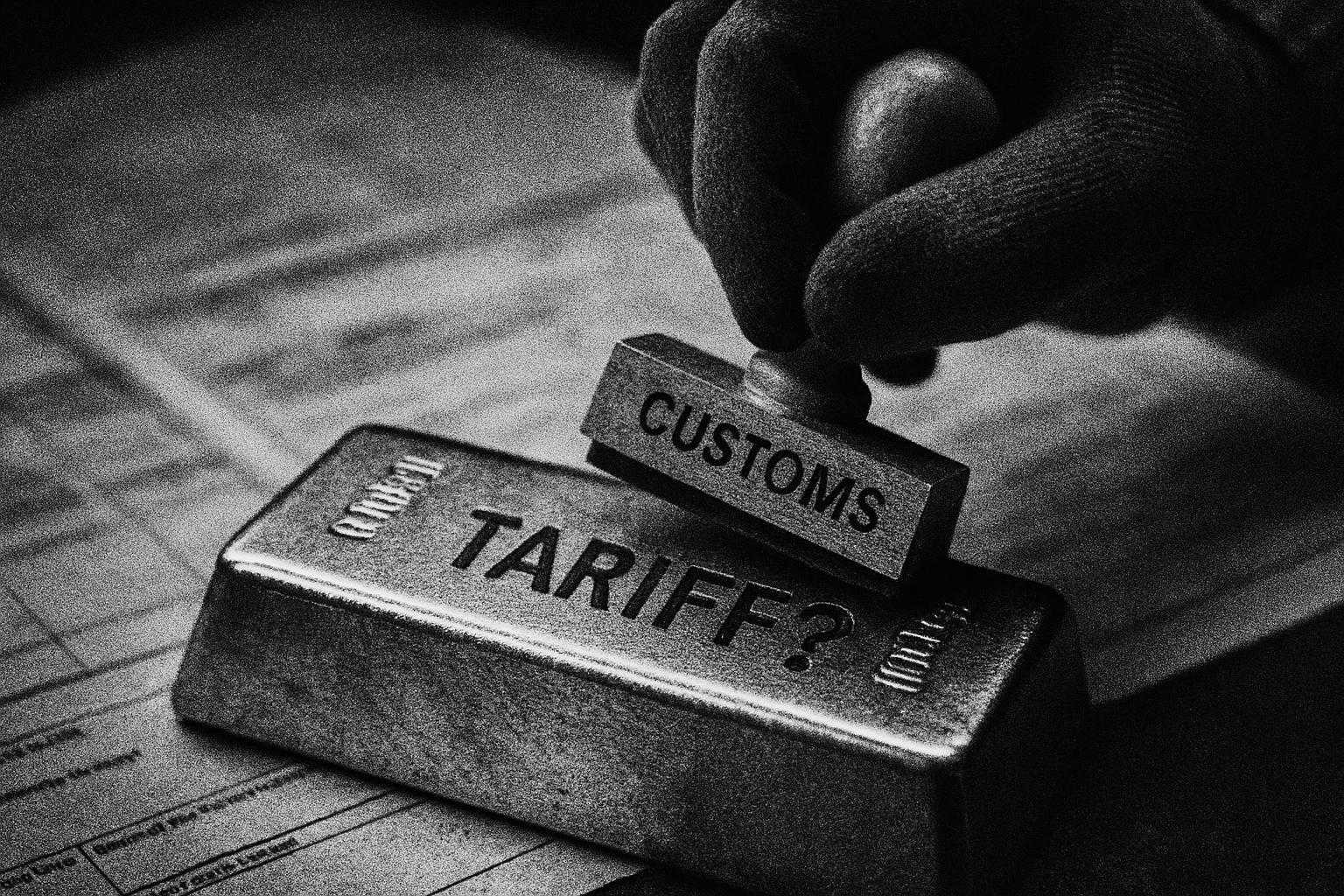A surprise ruling by US customs that appeared to reclassify certain gold bars as liable for import duties sent bullion markets into turmoil this month, briefly driving US futures to intraday records above $3,500 per troy ounce and lifting spot prices into the low‑$3,000s as investors sought a safe haven. According to market reports, futures spiked to roughly $3,534–$3,535 an ounce in the immediate aftermath, while some spot readings reached about $3,165 an ounce during early Asian trading as the dollar softened and risk‑off flows increased.
The shock stemmed from a Customs and Border Protection letter that flagged one‑kilogram and 100‑ounce bars — common delivery sizes on Comex — as potentially subject to tariffs, reversing long‑held expectations that such bullion moved freely across borders. Industry analysts and trade commentators highlighted Switzerland’s exposure: as the world’s largest refining hub, it ships vast volumes of kilo bars to the US. Different estimates circulated in the wake of the ruling, with one report citing about £45.7 billion of Swiss gold exports to the US in the year to June, while financial‑market analysis put Swiss shipments exposed to the change at roughly $61.5 billion over the prior 12 months. Refiners warned that, if duties were applied, the resulting levies could be substantial and would threaten established bullion logistics.
The initial uncertainty prompted immediate market and operational reactions. Shares in some London‑listed miners rose on the expectation of higher prices, while several refineries temporarily paused shipments pending clarification — a move that analysts warned could widen the premium between US futures and London prices and force arbitrage and delivery frictions across the market. Speaking to the Daily Mail, Susannah Streeter, head of money and markets at Hargreaves Lansdown, summed up investor sentiment: “Gold had been shining as a shelter amid the trade storm.” Market commentaries also noted that broader macro drivers — including expectations around US monetary policy — reinforced the rally even as traders tried to quantify the practical impact of any new levies.
Within days political intervention altered the tone. Reuters reported that President Donald Trump said gold would not face tariffs, a clarification that helped cool the session and saw US futures and global spot gold retreat from their intraday peaks. That reassurance was welcomed by traders and some industry participants, but officials and refiners warned that uncertainty remained until a formal, written change in Customs policy was published. Swiss diplomats and industry representatives had already engaged Washington in talks to seek a reduction or reversal of the tariff treatment, and discussions were reported to be ongoing as the market awaited definitive guidance.
Market commentators say the episode underlines how fragile bullion supply chains are to policy shifts and how quickly well‑established markets can be disrupted. Analysis published after the ruling argued that reclassification of kilo and 100‑ounce bars could have dented Comex’s delivery mechanism, created logistics bottlenecks and altered pricing relationships between centres such as New York, London and Zurich. For now, traders are watching for a clear, legal statement from US customs and for further diplomatic movement from Switzerland; until then, analysts counsel caution — the initial spike demonstrated gold’s role as a haven, but the subsequent clarification showed how policy noise can rapidly reverse market moves.
📌 Reference Map:
##Reference Map:
- Paragraph 1 – [1], [6], [4]
- Paragraph 2 – [5], [3], [7], [1]
- Paragraph 3 – [1], [4], [6], [5]
- Paragraph 4 – [2], [3], [5], [1]
- Paragraph 5 – [7], [5], [6], [2], [3]
Source: Noah Wire Services
